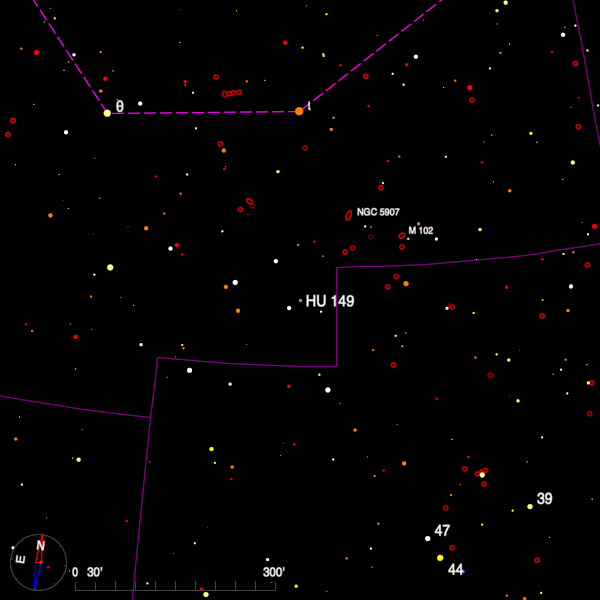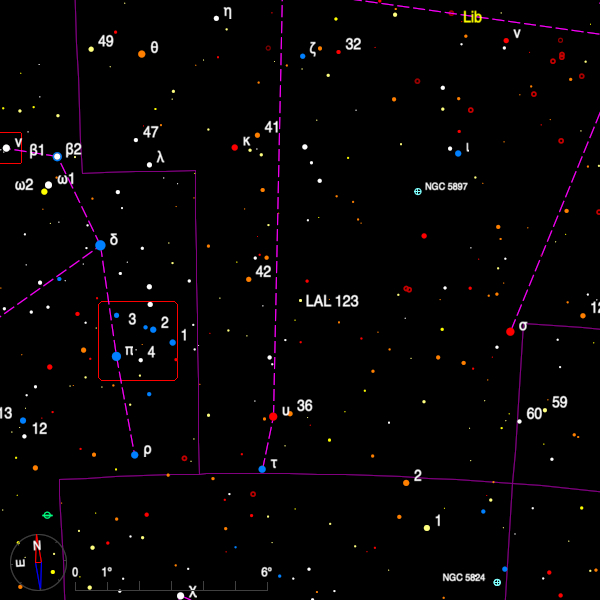June 2023 - Double Star of the Month
HU 149 (15 24 35.30 +54 12 46.1) is from the catalogue of William J. Hussey, a well-known observer and discoverer of visual double stars who worked in the USA and who was a leading instigator of the Lamont-Hussey Observatory which was set up in Bloemfontein, South Africa and equipped with a 27-inch refractor with which R. A. Rossiter spent a lifetime on his own catalogue of discoveries.

Many of the Hussey pairs tend to be close and difficult and HU 149 was only 0".2 apart when found in 1900, but it has since widened and according to the 770 year orbit of Zirm (2015), the stars should now be about 0".65 apart. A recent measurement by Andreas Alzner with a 32-cm Cassegrain confirms that the separation is close to 0".7. The pair has just passed one of the maximum separations in the apparent orbit and will now close to 0".1 by the 2180s. The stars are almost equally bright at V = 7.5 and 7.6 respectively.
The name Jerome de Lalande appears in the Washington Double Star catalog (WDS) although just 4 pairs appear under his discovery prefix (LAL) - numbers 53, 123, 192 and 193. All are worth looking out for and this month I have chosen LAL 123 (15 33 09.52 -24 29 15.9) which sits roughly half-way between the three bright stars in the head of the Scorpion and sigma Librae.

The stars are magnitudes 6.9 and 7.0 and were 9".3 apart in 2016 at PA 302 degrees. This is an easy object for 10-cm but the possessors of larger telescopes may like to examine the B star more closely. This was found to be double by T.J.J. See and has turned out to be a binary of 61 year period. The pair passes widest separation the next few years and at the moment the stars are just 0".33 apart - calling for at least 40-cm to resolve - and they have visual magnitudes of 7.0 and 8.2.
The A component is an even closer pair and was found by speckle interferometry. CHR 232, at 0".1 and a period of 16.47 years, is beyond all but the largest apertures especially as there is almost a two magnitude difference in the brightness of the components.
Bob Argyle - Double Star Section Director